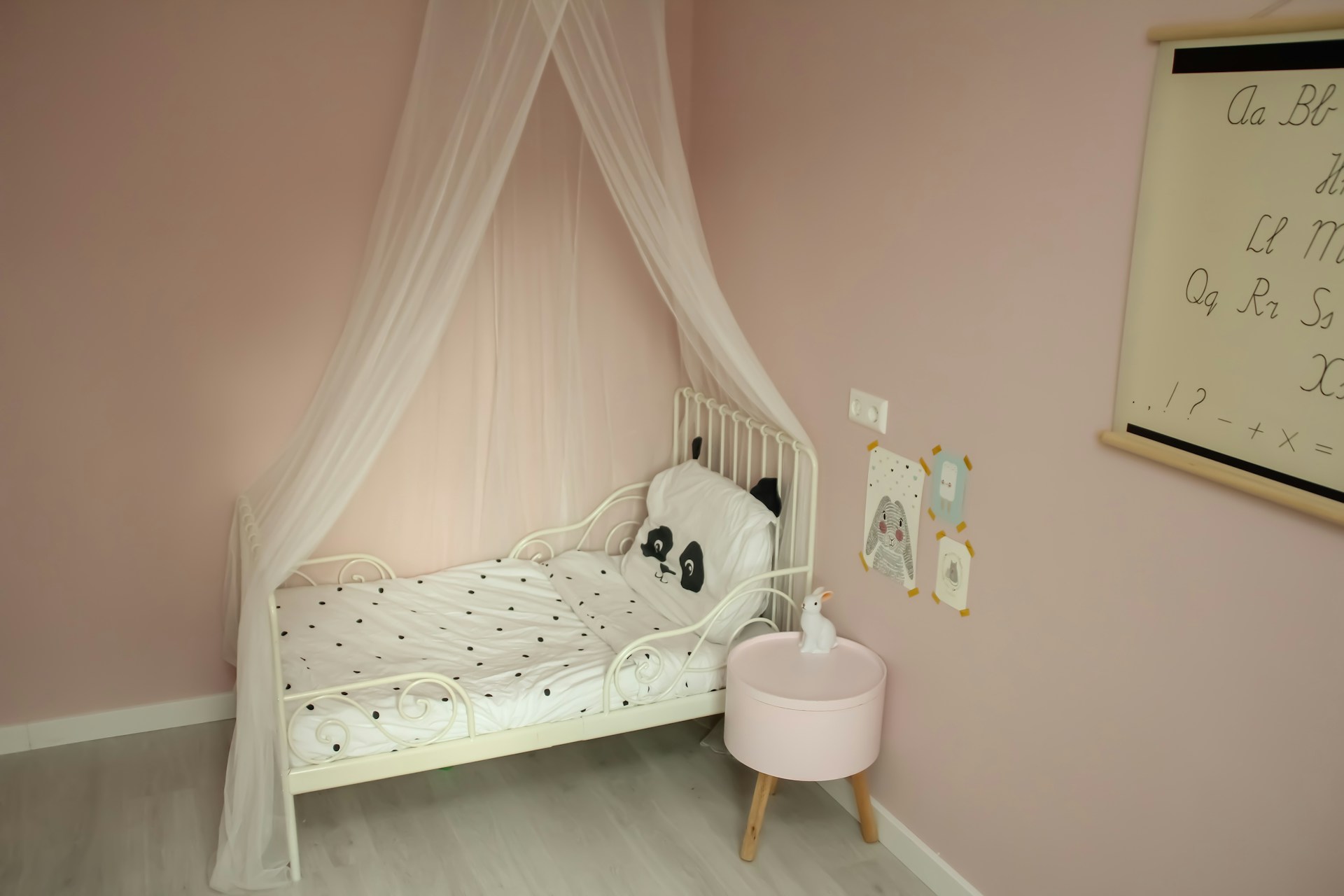For many parents, designing and decorating their child’s room is a joyous and exciting part of creating the ideal home. It’s a space where young minds can play, learn, grow, and dream – and the colours used in this special room can have a significant impact on your child’s sleep, mood, and overall development.
As a full-service interior/exterior painting, drywall repair, and furniture restoration company in Ottawa, we understand the power of colour and are passionate about helping families create nurturing, inspiring, and welcoming spaces for their children.
In this article, we will delve into the fascinating world of colour psychology for children’s rooms. We will explore how specific colours can influence your little one’s emotions, encourage creativity and imagination, and even impact their quality of sleep. With this valuable information, you can make well-informed decisions when selecting paint colours for your child’s room, creating a space designed to support their unique needs and preferences.
As we discuss the benefits and considerations of various colours, we will also share practical tips and recommendations for harmonious colour schemes that can grow with your child over time. From gentle, calming hues that promote restful sleep to energizing colours that spark creativity, the right colour choices can have a significant and lasting impact on your child’s well-being and development.
Unravelling the Science of Colour Psychology
Colour psychology is a fascinating field that explores how colours can affect human behaviour, mood, and perception. While responses to colours can vary between individuals, cultural contexts, and personal experiences, certain colour associations and effects appear to be universal. As we discuss colour choices for your child’s room, we’ll consider the psychological implications and potential benefits of each hue to guide your paint selection process.
Choosing Colours That Encourage Restful Sleep
One of the critical considerations for a child’s room is selecting colours that will help promote a restful, calming environment conducive to sleep. Here are some optimal choices for a sleep-friendly colour palette:
1. Soft Blues: The serenity and calmness associated with soft shades of blue make them an excellent choice for promoting relaxation and restful sleep in a child’s room.
2. Soothing Greens: Earthy, muted shades of green bring a sense of balance and harmony to a space, making them ideal for creating a tranquil environment for sleep.
3. Gentle Greys: Soft, neutral greys create a soothing and calming atmosphere that can encourage relaxation without feeling overly stimulating or vibrant.
Inspiring Imagination and Creativity with Colour
Beyond facilitating quality sleep, a child’s room should also inspire creativity and imagination. Incorporate these energizing colours to spark young minds:
1. Playful Yellows: Bright, sunshine-inspired shades of yellow can create an uplifting, cheerful atmosphere that fosters creativity, concentration, and happiness.
2. Vibrant Oranges: Energizing and invigorating, orange hues can encourage social interaction, self-confidence, and creativity in children.
3. Dynamic Reds: While bold reds should be used sparingly in a child’s room, they can inspire excitement, confidence, and a sense of adventure when used as an accent.
Creating Balance: Colour Combinations and Selection Tips
Striking the right balance in a child’s room is essential in ensuring the space is both functional and visually appealing. Keep these tips in mind when selecting colour combinations:
1. Reach for Complementary Colours: Combining colours from opposite sides of the colour wheel – such as soft blue and gentle yellow – can create harmony and balance while still adding a touch of playfulness.
2. Embrace Neutrals: Neutral shades (white, soft greys, or beige) make excellent base colours, allowing you to introduce pops of colour through accents and accessories for an adaptable, timeless design.
3. Coordinate with Furniture and Décor: Consider the colour theme of your child’s furniture and décor when selecting paint colours, allowing for a cohesive and well-planned design.
Growing with Your Child: Adaptable Colour Choices
Lastly, it’s important to remember that your child’s interests and preferences will develop and change over time. Opt for versatile colours that can be easily updated or refreshed as your child grows:
1. Start with a Neutral Base: A neutral base colour, like off-white or light grey, allows for easy updates by merely changing the room’s accents and décor.
2. Introduce Accent Colours: Use colourful accents—such as pillows, curtains, or artwork—to add personality to the room without committing to a specific colour on the walls.
3. Consider Colour Zones: Dividing your child’s room into different zones – like a study area, play area, and sleep area – can allow for the use of multiple colours tailored to suit each zone’s function.
Create a Vibrant Sanctuary with Picasso Paints
Making well-informed colour choices for your child’s room can have a significant impact on their sleep, mood, and overall well-being. With a clear understanding of colour psychology and your child’s unique personality, you can transform their room into a space that promotes restful nights and fuels their imagination during the day.
For expert guidance on interior painting in Ottawa, trust Picasso Paints to bring your vision to life. Our experienced team will work with you to create the dream space your child deserves, blending skill, knowledge, and creativity to deliver a beautiful, functional, and truly one-of-a-kind room that will grow with them.

Leave a Reply